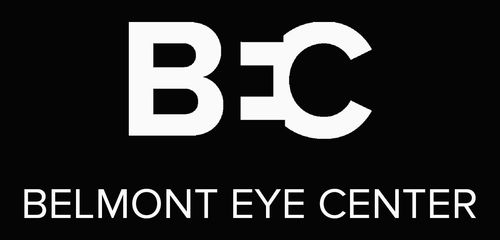No, kids generally don’t know they have bad vision; they adapt to whatever eyesight they have. But there are some clues for parents. For example, notice if your child is squinting or standing really close to the television or other stimuli. Or if they hold books, phones or tablets really close to their face. If you notice your child doing any of these things, they may need glasses.
Poor eyesight absolutely can affect learning! If you have a child who does well with homework and reading materials but is inattentive in class and has behavioral issues, it may be a problem with the child’s vision. Kids don’t know they should be able to see what’s on the board.
During this past year, we’ve seen a lot of dry eyes — people, including kids, blink less while staring at a screen. A normal blinking rate is 25-35 blinks per minute, but our blink rate decreases to five to seven times per minute when using electronic devices for a prolonged time.
We have also seen a high spike in children with eyelid inflammation known as blepharitis, and inflammatory bumps on the eyelid known commonly as ‘styes.’ We call styles chalazion or hordeolum. Kids are at home more, and they aren’t bathing and washing their faces as much as they used to. Many are also wearing poorly fitting masks that might not be so clean, so they are blowing their mouth germs up into their eyes. Combined with decreased blinking from screen time, it’s a recipe for eye problems.
Kids often don’t know they have poor eyesight, which is why screening and exams are important. Screen time increased dramatically during the pandemic. Developmentally, children’s eyes are still growing, so most are slightly “farsighted,” which means it’s easier for them to see objects in the distance. Now kids are doing more close-up work, straining their eyes to keep things in focus. We call that “accommodating.” But it’s not just at school. Almost every child now has a tablet, iPad or cellphone with videos, games and social media that kids absorb for hours. So, in addition to distance learning, they are also playing on screens more outside of school hours, which increases eye strain.
The American Academy of Pediatrics (AAP) recommends:
– Toys can help keep young patients focused during eye exams.
– Spending too much time doing close work can permanently change the development of a child’s eye, which changes their vision and leads to more nearsightedness, called myopia. This not only sets children up for a lifetime of glasses, but also puts them at risk for complications of nearsightedness, like retinal detachment, glaucoma, amblyopia (“lazy eye”), and even blindness.
– A television across the room is better than a tablet close to the face. So instead of letting your child stare at a phone or tablet, try streaming the content so your child can watch it on a television or large monitor. If they are on a laptop for distance learning, consider getting a separate monitor and putting it more than 25 inches, or an arm’s length away, from your child. Farther is better.
– There is currently not enough evidence or data to support blue light glasses and filters to reduce the effects of strain on the eye. But children do need sun protection for their eyes as much as adults. Sunglasses are especially important during the summer months when they are out in the bright sunlight. During summer, it’s also important that kids wear goggles in the pool to prevent eye irritation from chlorine and chemical cleaners. Sunglasses are also important during winter if you are in the snow and there’s a lot of glare.
-Yes, carrots are good for eyesight! They contain beta-carotene, which the body uses to produce vitamin A. Vitamin A helps the eye convert light to a signal sent to your brain. Vitamin C and E, lutein and zeaxanthin are also important antioxidants for the eyes that are found in leafy greens, nuts, legumes, seeds, sweet potatoes and citrus fruits.
Improve eyesight with the 20-20-20 Rule and “BLINK”
20-20-20 Rule: Every 20 minutes, look 20 feet away, for 20 seconds.
BLINK
B: Blink more frequently!
L: Lubricate your child’s eyes with artificial tears during the day or artificial tear ointment at night. If your house is dry, use a humidifier.
I: Inches away – Computers and screens should be viewed from at least 25 inches or an arm’s length away.
N: Near device breaks – Go outside for at least one hour per day to expose your eyes to natural light.
K: Know your sources – Follow evidence-based guidelines and strategies. Good sources include your child’s pediatrician, pediatric ophthalmologist, the American Academy of Ophthalmology, and the American Association of Pediatric Ophthalmology and Strabismus
A well-balanced, healthy diet, like the Mediterranean diet, is good for eye health. We also know that a diet rich in Omega-3 fatty acids is good for eye health and can help treat dry eyes and eyelid inflammation. Omega-3s are a type of polyunsaturated fat. You can get them from fish like salmon, mackerel and albacore tuna, or from fish oil. If you are a vegetarian or vegan, you can get Omega-3s from plant sources like flaxseed or walnuts.
You can also take multivitamins with Omega 3. They come in yummy liquid and gummy forms for children and picky eaters!
A child’s vision can be screened by a pediatrician, family physician, optometrist, ophthalmologist or trained health care provider. Vision screens are also offered at schools, community health centers or community events. In California, kids get their vision screened at school in kindergarten, second, fifth and eighth grades.
Vision can change quickly. We are seeing vision changes and progression in the strength of glasses sometimes in just six months. So even if your child’s vision has been normal, that may have changed. If you think your child might be having vision problems, make an appointment to have their vision screened.
source
